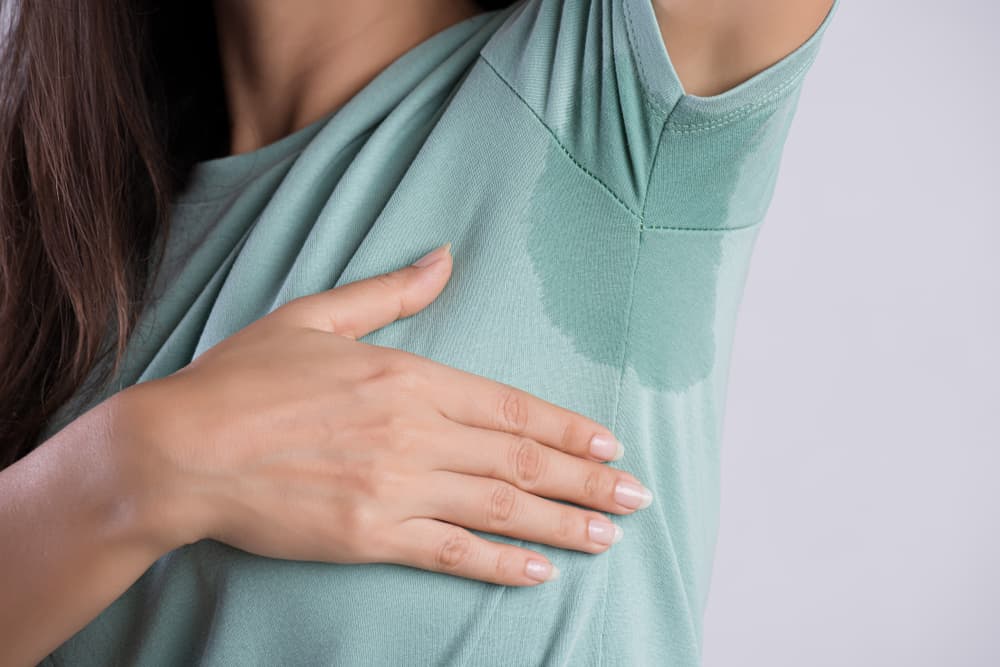Medically reviewed by Jennifer Wong, DO
Everyone sweats, but sweating beyond normal amounts, known as hyperhidrosis, can be stressful and embarrassing. If it seems like no amount of antiperspirant can keep your armpits dry, or you have a sweaty face or head even when it’s not that hot out and you’re not exercising, you’re probably wondering how to stop excessive sweating. Botox is a hyperhidrosis treatment to consider.
Yes, the popular wrinkle treatment can reduce excessive armpit sweating and even sweating from other parts of the body. If you’re curious about Botox for sweating, read on for answers to common questions doctors hear from patients who are interested in the procedure.
How does Botox for hyperhidrosis work?
Botox (botulinum toxin) injections reduce sweating by paralyzing the nerves that activate your sweat glands.
When your body temperature rises, the nervous system tells the glands to release sweat, which cools you down. It’s a healthy and necessary process, but in people with hyperhidrosis, these nerves are overactive, causing sweating that soaks parts of the body.
Why do my armpits sweat so much?
The cause of excessive sweating depends on the type of hyperhidrosis you have. Primary hyperhidrosis, which starts in childhood and gets worse in the teen years, is genetic. Secondary hyperhidrosis can be caused by certain diseases (including diabetes, neurologic syndromes, gout and alcoholism), certain medications (including some antidepressants, corticosteroids and opioid pain relievers) and menopause.
What other sweaty parts of the body can be treated with Botox?
While the underarms are a popular target—and the only area for which Botox is FDA-approved to treat hyperhidrosis—you can get Botox for sweaty hands, Botox for face sweating and Botox for excessive sweating of the feet, the head and the underside of the breasts.
How effective is Botox for sweating?
For excessive armpit sweating, Botox is highly effective. One study showed a nearly 90% decrease in sweat two weeks after treatment in people with primary hyperhidrosis, and a decrease of about 65% at 24 weeks.
Studies evaluating how well Botox works on other body parts are limited, but one investigation found a 90% decrease in sweating of the palms (primary palmar hyperhidrosis). In a study in teens with excessively sweaty feet (juvenile plantar hyperhidrosis), 73% of participants said they were pleased with the results.
What to expect when getting Botox for sweating
Botox treatment is quick. Injecting the underarms, for example, can be performed in as little as 10 minutes. It doesn’t take long to see results, either. Most people notice a difference in excessive sweating four to five days after treatment, and the full effects are seen in about two weeks.
Though many Botox injections are required in a session—about 25 injections in each armpit, for example—the needles used are tiny. Some people don’t feel them. Others experience a mild rubber-band-snap sensation. You may feel more discomfort if you have Botox injections in your palms or the soles of your feet.
Are there safety concerns?
Botox for excessive sweating is considered generally safe when the injections are given by a licensed healthcare professional. Side effects may include pain or bruising at the injection site, skin irritation, bleeding, headache and flu symptoms. Botox injections in the face can potentially cause eye dryness and temporary eyelid drooping or facial paralysis.
Very rarely, Botox can cause trouble breathing or seeing, loss of bladder control or muscle weakness throughout the body. Seek immediate medical help if you experience any serious side effects.
How long does Botox for hyperhidrosis last?
The effects typically last at least four to six months and sometimes up to a year, gradually decreasing over time. When excessive sweating returns, you can go back to your dermatologist for another round of treatment.
Written by Jessica Brown, a health and science writer/editor based in Nanuet, New York. She has written for Prevention magazine, jnj.com, BCRF.org, and many other outlets.
